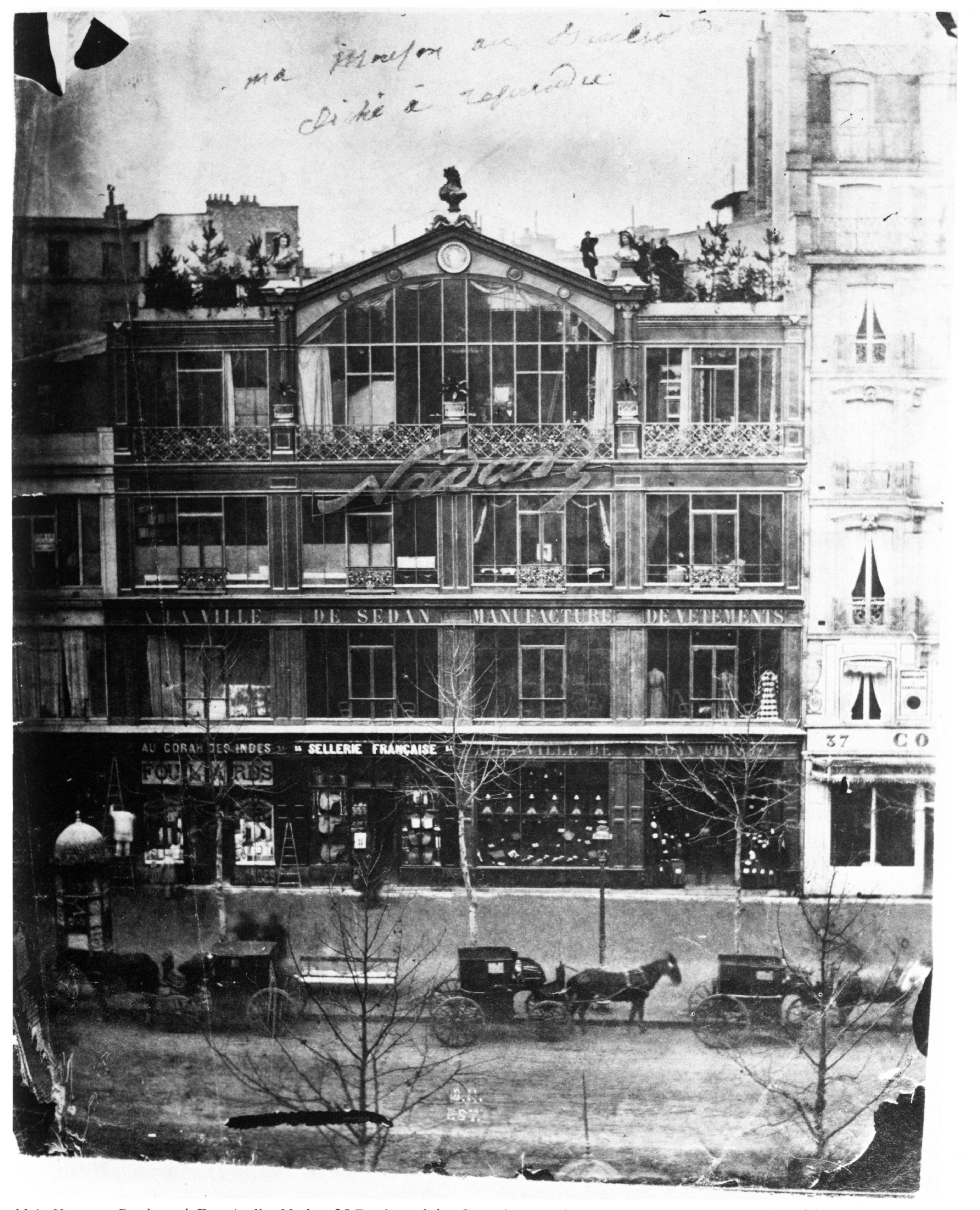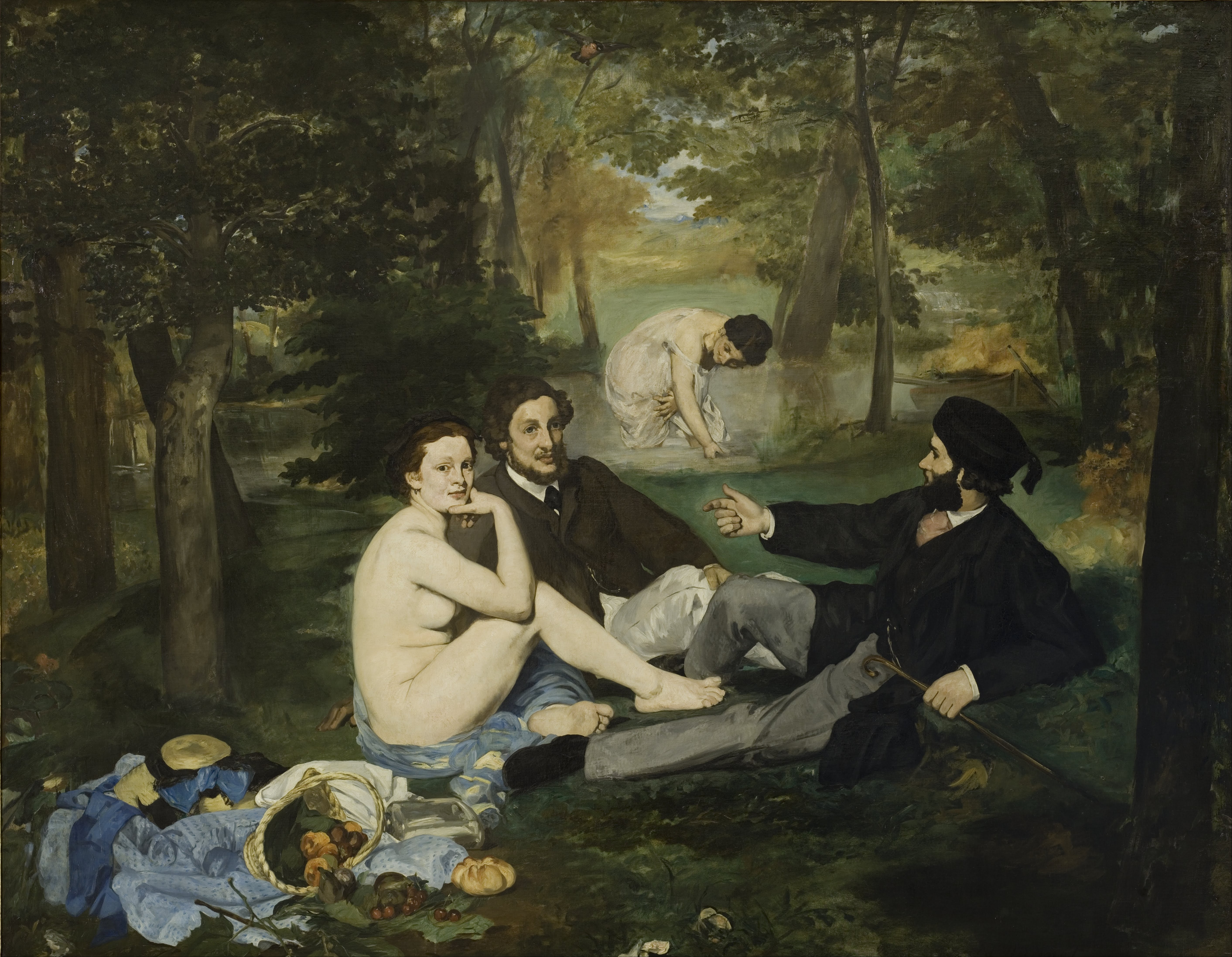|
Boulevard Des Capucines (Monet)
''Boulevard des Capucines'' is an oil on canvas street scene painting of the famous Paris boulevard by French Impressionist artist Claude Monet created in 1873. History From the late 1860s, Monet and other like-minded artists, met with rejection from the conservative Académie des Beaux-Arts which held its annual exhibition at the Salon de Paris. During the latter part of 1873, Monet, Renoir, Pissarro, and Sisley organized the Société anonyme des artistes peintres, sculpteurs et graveurs to exhibit their artworks independently. At their first exhibition, held in April 1874, Monet exhibited the work that was to give the group its lasting name, ''Impression, Sunrise''. Among the works Monet included in the First Impressionist Exhibition was ''The Luncheon'', 1868, which features Camille Doncieux and Jean Monet. The painting was rejected by the Paris Salon of 1870. Also in this exhibition was a painting titled ''Boulevard des Capucines'', a painting of the boulevard done fr ... [...More Info...] [...Related Items...] OR: [Wikipedia] [Google] [Baidu] |
Claude Monet
Oscar-Claude Monet (, , ; 14 November 1840 – 5 December 1926) was a French painter and founder of impressionist painting who is seen as a key precursor to modernism, especially in his attempts to paint nature as he perceived it. During his long career, he was the most consistent and prolific practitioner of impressionism's philosophy of expressing one's perceptions before nature, especially as applied to ''plein air'' (outdoor) landscape painting. The term "Impressionism" is derived from the title of his painting '' Impression, soleil levant'', exhibited in the 1874 ("exhibition of rejects") initiated by Monet and his associates as an alternative to the Salon. Monet was raised in Le Havre, Normandy, and became interested in the outdoors and drawing from an early age. Although his mother, Louise-Justine Aubrée Monet, supported his ambitions to be a painter, his father, Claude-Adolphe, disapproved and wanted him to pursue a career in business. He was very close to his mot ... [...More Info...] [...Related Items...] OR: [Wikipedia] [Google] [Baidu] |
Impression, Sunrise
''Impression, Sunrise'' ( French: ''Impression, soleil levant'') is an 1872 painting by Claude Monet first shown at what would become known as the "Exhibition of the Impressionists" in Paris in April, 1874. The painting is credited with inspiring the name of the Impressionist movement. ''Impression, Sunrise'' depicts the port of Le Havre, Monet's hometown. It is now displayed at the Musée Marmottan Monet in Paris. History Monet visited his hometown of Le Havre in the Northwest of France in 1872 and proceeded to create a series of works depicting the port of Le Havre. The six painted canvases depict the port "during dawn, day, dusk, and dark and from varying viewpoints, some from the water itself and others from a hotel room looking down over the port". ''Impression, Sunrise'' became the most famous in the series after being debuted in April 1874 in Paris at an exhibition by the group "Painters, Sculptors, Engravers etc. Inc." Among thirty participants, the exhibition was led b ... [...More Info...] [...Related Items...] OR: [Wikipedia] [Google] [Baidu] |
Paintings By Claude Monet
Painting is the practice of applying paint, pigment, color or other medium to a solid surface (called the "matrix" or "support"). The medium is commonly applied to the base with a brush, but other implements, such as knives, sponges, and airbrushes, can be used. In art, the term ''painting ''describes both the act and the result of the action (the final work is called "a painting"). The support for paintings includes such surfaces as walls, paper, canvas, wood, glass, lacquer, pottery, leaf, copper and concrete, and the painting may incorporate multiple other materials, including sand, clay, paper, plaster, gold leaf, and even whole objects. Painting is an important form in the visual arts, bringing in elements such as drawing, Composition (visual arts), composition, gesture (as in gestural painting), narrative, narration (as in narrative art), and abstraction (as in abstract art). Paintings can be naturalistic and representational (as in still life and landscape art, lands ... [...More Info...] [...Related Items...] OR: [Wikipedia] [Google] [Baidu] |
1873 Paintings
Events January–March * January 1 ** Japan adopts the Gregorian calendar. ** The California Penal Code goes into effect. * January 17 – American Indian Wars: Modoc War: First Battle of the Stronghold – Modoc Indians defeat the United States Army. * February 11 – The Spanish Cortes deposes King Amadeus I, and proclaims the First Spanish Republic. * February 12 ** Emilio Castelar, the former foreign minister, becomes prime minister of the new Spanish Republic. ** The Coinage Act of 1873 in the United States is signed into law by President Ulysses S. Grant; coming into effect on April 1, it ends bimetallism in the U.S., and places the country on the gold standard. * February 20 ** The University of California opens its first medical school in San Francisco. ** British naval officer John Moresby discovers the site of Port Moresby, and claims the land for Britain. * March 3 – Censorship: The United States Congress enacts the Comstock Law, makin ... [...More Info...] [...Related Items...] OR: [Wikipedia] [Google] [Baidu] |
List Of Paintings By Claude Monet
This is an incomplete list of works by Claude Monet (1840–1926), including nearly all the finished paintings but excluding the ''Water Lilies'', which can be found here, and preparatory black and white sketches. Biography of Claude Monet giverny.org. Retrieved 6 January 2007. Monet was a founder of French painting, and the most consistent and prolific practitioner of the movement's philosophy of expressing one's perceptions before nature, especially as applied to '''' |
Pushkin Museum
The Pushkin State Museum of Fine Arts (russian: Музей изобразительных искусств имени А. С. Пушкина, abbreviated as ) is the largest museum of European art in Moscow, located in Volkhonka street, just opposite the Cathedral of Christ the Saviour (Moscow), Cathedral of Christ the Saviour. The International musical festival ''Sviatoslav Richter's December nights'' has been held in the Pushkin Museum since 1981. Etymology Despite its name, the museum has no direct association with the Russian poet Alexander Pushkin, other than as a posthumous commemoration. The facility was founded by professor Ivan Tsvetaev (father of the poet Marina Tsvetaeva). Tsvetaev persuaded the millionaire and philanthropist Yury Nechaev-Maltsov, Yuriy Nechaev-Maltsov and the architect Roman Klein of the urgent need to give Moscow a fine arts museum. After going through a number of name changes, particularly in the transition to the Soviet era and the return of the Rus ... [...More Info...] [...Related Items...] OR: [Wikipedia] [Google] [Baidu] |
Nadar (photographer)
Gaspard-Félix Tournachon (5 April 1820 – 20 March 1910), known by the pseudonym Nadar, was a French photographer, caricaturist, journalist, novelist, balloonist, and proponent of heavier-than-air flight. In 1858, he became the first person to take aerial photographs. Photographic portraits by Nadar are held by many of the great national collections of photographs. His son, Paul Nadar (1856–1939), continued the studio after his death. Life Gaspard-Félix Tournachon (also known as Nadar) was born in early April 1820 in Paris, though some sources state he was born in Lyon. His father, Victor Tournachon, was a printer and bookseller. Nadar began to study medicine but quit for economic reasons after his father's death. Nadar started working as a caricaturist and novelist for various newspapers. He fell in with the Parisian bohemian group of Gérard de Nerval, Charles Baudelaire, and Théodore de Banville. His friends picked a nickname for him, perhaps by a playful habit of ad ... [...More Info...] [...Related Items...] OR: [Wikipedia] [Google] [Baidu] |
Jean Monet (son Of Claude Monet)
Jean Monet (August 8, 1867 – February 10, 1914) was the eldest son of French Impressionist artist Claude Monet and Camille Doncieux Monet and the brother of Michel Monet. He was the subject of several paintings by his father and married his step-sister, Blanche Hoschedé. Early life Jean Monet was born to Camille Doncieux and Claude Monet on August 8, 1867. During that summer Claude Monet was staying at his father's house in Sainte-Adresse, a suburb of Le Havre. Monet went to Paris for the birth of Jean and returned to Sainte-Adresse on the 12th of the month. The first portrait that Monet made of his son was of the four-month-old ''Jean Monet in His Cradle''. Alongside Jean was a woman Julie Vellay, a companion of Camille Pissarro, rather than his mother. According to Mary Mathews Gedo, author of ''Monet and his Muse: Camile Monet in the Artist's Life:'' ::The identification of Jean's attendant as someone other than his mother seems entirely consistent with what would prov ... [...More Info...] [...Related Items...] OR: [Wikipedia] [Google] [Baidu] |
Camille Doncieux
Camille-Léonie Doncieux (; 15 January 1847 – 5 September 1879) was the first wife of French painter Claude Monet, with whom she had two sons. She was the subject of a number of paintings by Monet, as well as Pierre-Auguste Renoir and Édouard Manet. Early life Camille-Léonie Doncieux was born in the town of La Guillotiere, now part of Lyons, France, on 15 January 1847. Her father, Charles Claude Doncieux, was a merchant. He moved with his wife Leonie-Françoise (née Manéchalle) Doncieux and daughter to Paris, near the Sorbonne, early in the Second French Empire (1852-1870). A few years after the birth of her sister, Geneviève-François in 1857, the family moved to Batignolles, now a part of the northwestern section of Paris. Batignolles was popular with artists. While in her teens, Doncieux began work as a model. She met Monet, seven years her senior, in 1865 and became his model posing for numerous paintings. She was Monet's mistress, living in poverty at the beginning ... [...More Info...] [...Related Items...] OR: [Wikipedia] [Google] [Baidu] |
First Impressionist Exhibition
The First Impressionist Exhibition was an art exhibition held by the , a group of nineteenth-century artists who had been rejected by the official Paris Salon (Paris), Salon and pursued their own venue to exhibit their artworks. The exhibition was held in April 1874 at ''35 Boulevard des Capucines'', the studio of the famous photographer Nadar. The exhibition became known as the "Impressionist Exhibition" following a satirical review by the art critic Louis Leroy in the 25 April 1874 edition of ''Le Charivari'' entitled "s:Exhibition of the Impressionists, The Exhibition of the Impressionists". Leroy's article was the origin of the term Impressionism. History Background In mid-19th century France, artists depended on public exhibitions to connect them with patrons willing to buy their artworks. The most prestigious exhibition was the Salon (Paris), Salon in Paris. From the earliest Salons in the 17th century until the French Revolution in 1789, only members of the ''Académi ... [...More Info...] [...Related Items...] OR: [Wikipedia] [Google] [Baidu] |
Nelson-Atkins Museum Of Art
The Nelson-Atkins Museum of Art is an art museum in Kansas City, Missouri, known for its encyclopedic collection of art from nearly every continent and culture, and especially for its extensive collection of Asian art. In 2007, ''Time'' magazine ranked the museum's new Bloch Building number one on its list of "The 10 Best (New and Upcoming) Architectural Marvels" which considered candidates from around the globe. On September 1, 2010, Julián Zugazagoitia (b. 1964) became the museum's fifth Director. Zugazagoitia had previously served for seven years as the Director and CEO of El Museo del Barrio in New York City. The museum is open five days a week: Monday from 10 am-5 pm, closed Tuesday and Wednesday, open Thursday 10-5, Friday 10-9, Saturday and Sunday 10-5. To maintain social distancing in the galleries, visitors must reserve a timed admission ticket online or by phone. Admission is free. History The museum was built on the grounds of Oak Hall, the home of '' Kansa ... [...More Info...] [...Related Items...] OR: [Wikipedia] [Google] [Baidu] |









